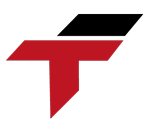Human-Machine Interfaces (HMIs) rely on reliable connections to communicate with PLCs and PCs. Among the essential components enabling this link is the HMI USB cable driver, which ensures seamless data transfer, programming, and firmware updates in industrial environments across Malaysia.
What is an HMI USB Cable Driver?
In modern automation systems, USB cable drivers play a crucial role in bridging communication between HMIs, PLCs, and computers. Understanding their purpose helps engineers maintain stable and secure connectivity in industrial settings.
HMIs connect with PLCs or PCs using USB, Ethernet, or Serial ports, depending on system design. These interfaces enable real-time data exchange for monitoring and control. Common communication protocols include Modbus, Ethernet/IP, and Profinet, which standardize data transmission across devices and brands.
What is an HMI USB Cable Driver?
What Are the Common Types of HMI USB Cables and Drivers?
Different HMI brands require specific cable types and driver software for optimal communication. Knowing these variations helps users prevent connection failures or compatibility issues.
USB Drivers for Popular HMI Brands
Each manufacturer provides its own driver and cable configuration. Siemens WinCC, Mitsubishi GOT, Omron NB, Delta DOP, Weintek, Proface, and Schneider Electric Magelis all require specific drivers downloadable from their official support pages to ensure reliable data exchange.
Differences Between Standard and Dedicated USB-Cables
While generic USB cables can sometimes work, dedicated HMI cables feature custom pinouts and embedded chips that provide more reliable communication. These ensure consistent data transmission and protect against interference or connection loss during programming.
Compatibility and Operating System Support
Windows 10 and 11 users often face issues with unsigned drivers or 32/64-bit incompatibility. Manufacturers frequently release driver updates to address these problems. Keeping your OS and driver versions aligned guarantees smooth installation and operation.
How to Install and Configure HMI USB Cable Drivers?
Proper installation ensures that HMIs communicate effectively with engineering software. Below is a simple, structured guide to setup and troubleshooting.
- Step-by-Step Installation Guide: First, download the driver directly from the manufacturer’s website. Then, connect your HMI to the PC and manually install the driver through Device Manager if automatic installation fails. After setup, confirm the assigned COM port before launching your HMI software.
- Common Connection and Driver Issues: Typical errors include “USB device not recognized,” COM port conflicts, and driver signature issues. These usually occur due to mismatched driver versions or corrupted installation files. Reinstalling the correct version often resolves the issue.
- Troubleshooting Tools and Utilities: Use software like Delta Screen Editor or Weintek EasyBuilder Pro to test HMI connections. Some brands also provide utilities to verify driver functionality or reset USB configurations, helping users quickly identify and fix connectivity issues.
How Are HMI USB Cable Drivers Used in Malaysia’s Industrial Applications?
HMI USB drivers are vital tools in Malaysia’s growing automation landscape, ensuring smart factories achieve efficient control and data management.
- Use Cases in Manufacturing and Process Control: In industries such as food processing, packaging, and automotive assembly, USB cables are used for HMI programming, firmware updates, and data backup. This connection allows engineers to deploy new configurations and monitor systems efficiently.
- Compliance with Malaysia Industry 4.0 Initiatives: Malaysia’s Industry 4.0 roadmap, led by MITI and MIDA, promotes smart connectivity through digitalization. Adopting authentic USB drivers supports this initiative by enabling local manufacturers to maintain robust communication networks within automated facilities.
- Local Vendors and Integrators Supporting HMI Connectivity: Key players such as Flextech, ABB Malaysia, Omron Malaysia, and Siemens Malaysia offer professional integration services. Their support ensures reliable connectivity for industrial automation systems throughout the country.
How Are HMI USB Cable Drivers Used in Malaysia’s Industrial Applications?
Where Can You Find Troubleshooting and Support Resources?
Accessing reliable support helps users solve technical issues faster and minimize downtime in industrial environments.
OEM Support and Documentation
Manufacturers such as Siemens, Delta, and Weintek provide official driver downloads and user manuals. Always refer to their documentation for accurate setup steps and troubleshooting guidelines.
Local Technical Support Channels
Malaysian integrators, including Flextech, provide on-site and remote assistance for driver installation, HMI programming, and connectivity issues. Their localized support ensures faster response times and expert consultation.
Online Forums and User Communities
Local engineering forums and professional groups on LinkedIn or Lowyat are excellent sources for peer assistance. These communities allow engineers to share experiences and find solutions to brand-specific issues.
Conclusion
HMI USB cable drivers are the invisible link powering smooth communication between HMIs, PLCs, and computers. In Malaysia’s journey toward smart manufacturing, using authentic cables and reliable drivers from trusted providers like Flextech ensures optimal performance, long-term system stability, and full compliance with Industry 4.0 standards.


